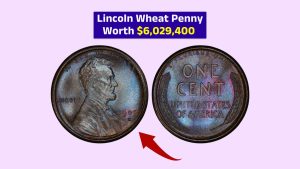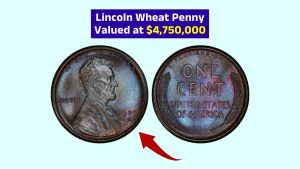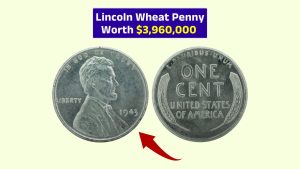The world of coin collecting is full of surprises, but none quite like the Lincoln Wheat Penny. What looks like an ordinary old coin could actually be worth over $3 million.
One rare version of this iconic penny has been valued at a stunning $3,172,500 — and what’s more incredible is that a few might still be hiding in circulation today.
Overview
The Lincoln Wheat Penny was first minted in 1909, featuring President Abraham Lincoln on the front to mark the 100th anniversary of his birth. It was the first U.S. coin to showcase a real person instead of the symbolic Lady Liberty.
On the reverse side, two wheat stalks frame the words “One Cent,” earning it the name Wheat Penny.
These pennies were produced until 1958, and while millions were made, only a small number have become valuable collectibles. Most are worth just a few cents — but rare versions have become prized treasures.
Value
So, what makes one of these pennies worth more than a luxury house? The answer lies in a freak minting error. In 1943, during World War II, the U.S. Mint switched from copper to steel-coated zinc for penny production to save copper for the war.
However, a few copper blanks (called planchets) accidentally made their way into the minting presses.
The result? A tiny batch of 1943 Lincoln Wheat Pennies made from copper instead of steel — and they’re now among the rarest coins ever made. Only about 20 are known to exist. One of them sold for an unbelievable $3,172,500 in a private auction, making it the most valuable Wheat Penny ever sold.
Possibility
Here’s the kicker: some of these rare pennies may still be out there. Experts believe a few copper 1943 Wheat Pennies remain unobserved, possibly mixed in with regular change, stored in old jars, or hidden in childhood coin collections.
Given how many steel pennies were made in 1943, it’s entirely possible for someone to unknowingly have a copper one. That’s why collectors and curious treasure hunters are always checking their spare change.
Identification
Think you’ve found a valuable Lincoln Wheat Penny? Here’s what to look for:
| Feature | What to Look For |
|---|---|
| Year | 1943 clearly stamped on the front |
| Material | Use a magnet — copper won’t stick |
| Color | Copper has a reddish-brown appearance |
| Weight | Copper weighs about 3.11 grams |
| Condition | Better condition means higher value |
If you believe you’ve found a 1943 copper penny, don’t clean it or tamper with it. Get it authenticated by a reputable coin grading service like PCGS or NGC. That step is crucial in determining its authenticity and value.
Hobby
Coin collecting isn’t just for history buffs or investors. It’s a hobby filled with stories, discovery, and the chance to uncover something extraordinary. Many collectors start small — maybe from curiosity — and soon find themselves hooked by the thrill of the hunt.
Even if you don’t find the $3 million penny, learning about coins and their history is rewarding in itself. It’s like holding a tiny time capsule from another era.
The Lincoln Wheat Penny isn’t just another coin. It’s a symbol of American history and, in rare cases, a life-changing asset.
The 1943 copper version has turned pocket change into a multimillion-dollar treasure, and with a few still possibly out there, the search is far from over.
So next time you get a handful of change, take a second glance. Your fortune could be staring right back at you — in the form of a little old penny.
FAQs
What makes the 1943 penny valuable?
It was mistakenly made of copper instead of steel.
How many 1943 copper pennies exist?
Only around 20 are believed to exist.
Can I still find one today?
Yes, experts believe some are still in circulation.
How can I test my 1943 penny?
Use a magnet — copper pennies won’t stick.
Who should authenticate rare coins?
Use trusted services like PCGS or NGC.



